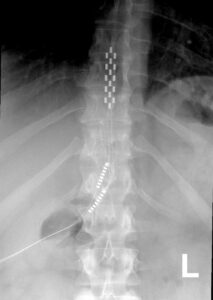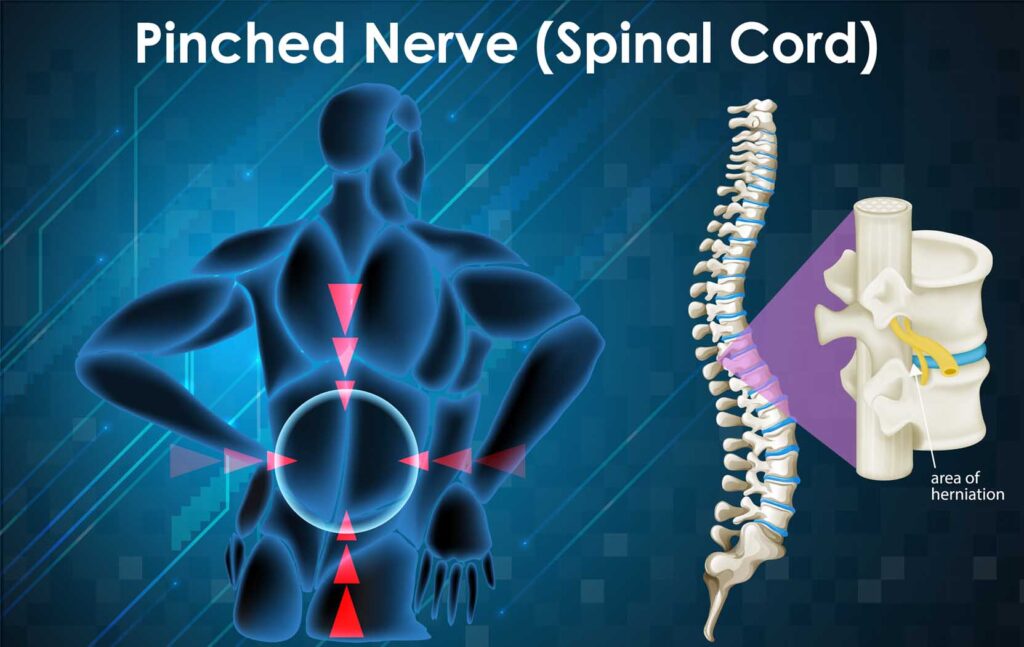What is it used for?
● Spinal Cord Stimulation is used to provide effective pain relief for chronic arm, leg, neck and back pain, as well as in certain pain conditions such as post back surgery pain, an-gina, and painful nerve pain from diabetes.
● Spinal Cord Stimulation is used on its own or in combination with other therapies in order to achieve the best possible pain relief.

How does it work?
● A stimulator produces electrical signals which are delivered to the nerve or the spinal cord.
● These electrical signals prevent the pain signal from reaching the brain, thus providing effective pain relief.
What are the steps involved?
● A stimulator trial is done to find out if there will be good pain relief upon implanting a Spinal Cord or a Peripheral Nerve device. This trial involves inserting the stimulating leads next to the spinal cord or a peripheral nerve.
● The procedure is done as day surgery in the operating theatre under ultrasound or fluor-oscopic guidance, following which the patient can be discharged home. The evaluating period is for about 7-10 days.
● If there is effective pain relief, then another appointment will be arranged for the perma-nent implant to be placed.
How is a stimulator trial performed?
● An intravenous cannula is placed into the hand. The patient will then be placed lying down on his tummy on a procedure table. Monitoring equipment will be placed and he is given some light sedation. A needle will be placed into the epidural space or around the nerve responsible for the pain under X-ray guidance. After this, a special wire with a stimulator lead will be threaded into place.
● Stimulator testing will be performed and the patient will be asked about the sensation that he feels and if it corresponds to his usual area of pain. After this, a dressing will be placed over the back and the lead and he will be observed in the recovery area for about an hour before getting discharged. There will be a technician who will instruct him as to how to use the stimulator unit.
What happens after the procedure?
● The patient is warned that the back pain may increase for 48-72 hours. He must not bend, stretch twist or lift with big movements/ more than 45 degrees. The patient must also check his back for redness, swelling or any discharge. The area of the insertion of the stimulator and the dressing needs to be kept dry, so he should not take a shower but should just wipe himself with a damp cloth.
● The stimulator should be used to see if it helps with his pain relief. There will be someone calling up daily to see how the patient is, and the patient will see us back in the clinic in about a weeks time. The stimulator lead and device will be removed and he can then resume normal activities. Another date will be arranged for the placement of the perma-nent device.
How is the Spinal Cord stimulator implanted?
● The leads, cables, electrodes and pulse generator are implanted into the patient under general anaesthesia. The placement of the leads and cables are under the skin, whereas the pulse generator is usually placed in the flank.
● After placement, the stimulator can produce continuous pain relief, and the settings can be adjusted via remote control. Close follow-up will be required initially in order to provide obtain the optimal settings required for pain relief.
What is the success rate of spinal cord stimulators?
● It is between 50-75% depending on the patient and condition.
De La Cruz P, Fama C, Roth S, et al. Predictors of Spinal Cord Stimulation Success. Neuro-modulation. 2015;18(7):599–602. doi:10.1111/ner.12325
How long does the procedure take?
● The trial takes about 45 min and the implantation of the device is usually done under general anaesthesia or deep sedation and takes about 2 hours.
What are the risks of the procedure?
There is a low risk of :
● Infection
● Spinal cord nerve damage
● Muscle weakness
● Device malfunction


